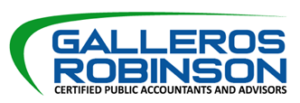Harnessing the Constraints-Led Approach (CLA)
in Business: A Game-Changer for Leadership,
Growth, and Employee Performance

As a business owner, you’re no stranger to navigating limitations—whether it’s a tight budget, a competitive market, or a lean team. But what if those very constraints could be your secret weapon for fostering innovation, sharpening leadership, and boosting overall performance? Enter the Constraints-Led Approach (CLA), a methodology originally rooted in sports coaching that emphasizes manipulating constraints to guide natural skill development and adaptability. In the business world, CLA shifts the focus from rigid instructions to strategically designed environments that encourage emergent solutions, creativity, and growth.
While CLA has its origins in athletic training—where coaches alter task rules, spaces, or equipment to help athletes discover effective techniques—it translates powerfully to organizational settings. By intentionally leveraging individual, task, and environmental constraints, business leaders can create conditions that promote self-organization and problem-solving. This approach aligns with evidence showing that constraints often spark greater innovation than unlimited resources, as they force teams to prioritize and think outside the box. In this article, we’ll explore how CLA can elevate your leadership skills, accelerate company growth, and enhance employee performance, complete with practical examples tailored for business owners.
Traditional leadership often involves top-down directives, but CLA encourages a more facilitative style where leaders design constraints to empower teams rather than micromanage them. This shift builds adaptive leadership by teaching you to observe, adjust, and let solutions emerge organically.
For instance, consider resource limitations as a leadership training ground. Instead of providing endless funding for a project, impose a strict budget constraint to challenge your team—and yourself—to innovate. This mirrors how constraints in business can clarify priorities and accelerate execution, turning potential roadblocks into opportunities for strategic sharpening. As a leader, you’ll develop skills in environmental design, learning to tweak variables like deadlines or team compositions to foster resilience and decision-making.
In practice, a business owner might apply CLA by constraining meeting times to 15 minutes, forcing concise communication and quick consensus-building. Over time, this hones your ability to guide without dominating, leading to a more agile leadership style that inspires trust and autonomy. Research highlights that such limits fuel creativity and agility, essential for modern leaders navigating uncertain markets.
Constraints aren’t barriers to growth—they’re catalysts. CLA posits that by imposing thoughtful limitations, businesses can channel efforts toward breakthrough innovations that propel expansion. This is particularly relevant in resource-scarce startups or scaling companies, where unchecked freedom can lead to scattered focus and inefficiency.
A key principle is using constraints as a filter to eliminate non-essentials and hone in on high-impact ideas. For example, if market entry is your growth goal, apply an environmental constraint like targeting only one niche segment initially. This narrowed scope creates efficiencies, allowing deeper customer insights and more targeted strategies, ultimately driving sustainable expansion.
Real-world applications abound: Think of how companies like Southwest Airlines grew by constraining their fleet to a single aircraft type, simplifying operations and reducing costs while innovating in efficiency. As a business owner, you could constrain product development to use only existing materials, sparking creative repurposing that leads to new revenue streams. Evidence supports that a “constraints culture” outperforms resource-heavy approaches in fostering innovation, leading to competitive advantages and long-term growth.
One of CLA’s strongest business applications is in employee training and performance improvement. Rather than rote training sessions, CLA encourages designing work tasks with constraints that promote exploration, variability, and skill adaptation—key to building a high-performing workforce.
Individual constraints, such as an employee’s current skill level, can be paired with task constraints like modified goals to encourage growth. For example, in a sales role, constrain the use of digital tools for a week to force reliance on interpersonal skills, enhancing adaptability and problem-solving. This hands-off method aligns with non-linear learning models, where diverse experiences lead to more robust performance.
To overcome common barriers like time constraints in employee development, apply CLA by integrating learning into daily workflows—such as limiting team collaborations to cross-functional pairs, which builds versatility and collaboration without formal programs. Business owners report that this approach not only improves individual output but also team dynamics, as employees learn to self-regulate and innovate under pressure. Ultimately, it fosters a culture of continuous improvement, where performance metrics rise through emergent behaviors rather than enforced compliance.
To get started with CLA, begin small and iterate:
Remember, the goal is emergence: Let solutions bubble up naturally for more authentic and lasting results.
In a world of endless possibilities, the Constraints-Led Approach reminds us that true progress often stems from thoughtful boundaries. By adopting CLA, business owners can transform leadership into a dynamic facilitation role, fuel innovative growth, and unlock peak employee performance. Far from stifling, constraints inspire creativity, efficiency, and adaptability—hallmarks of thriving enterprises. Start experimenting today, and watch how your business evolves not in spite of limits, but because of them.
To see past publications please visit our Knowledge Center.
The information presented here should not be construed as legal, tax, accounting, or valuation advice. No one should act on such information without appropriate professional advice and after a thorough examination of the particular situation.